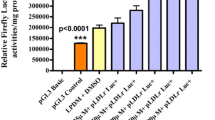Abstract
It has been shown that tumor necrosis factor (TNF) rapidly upregulates expression of the low density lipoprotein (LDL) receptors on Hep G2 cells and acutely stimulates hepatic lipid synthesis and secretionin vivo. It may thus be possible that TNF-induced expression of LDL receptors is secondary to a decrease in cellular cholesterol content caused by TNF-stimulated lipid secretion. In order to know whether TNF upregulates LDL receptors by depletion of the cellular cholesterol content, the present experiments were designed to study the temporal relationship between TNF-stimulated expression of LDL receptor activity and TNF-induced changes in lipid synthesis and secretion in anin vitro setting by using Hep G2 cells (a highly differentiated human hepatoma cell line) as a hepatocyte model. Hep G2 cells were incubated with TNF (usually 2.5 nmol/L) for certain periods, and LDL receptor activity was evaluated by measuring [125I]LDL binding at 4°C; lipid synthesis and secretion were assayed by measuring [3H]glycerol incorporation into triglycerides and phospholipids as well as [14C]acetate incorporation into cholesterol. We found that a 30-h exposure of the cells to TNF was needed for the effect of TNF to be seen on lipid synthesis and secretion as measured by incorporation of [3H]glycerol into triglycerides and phospholipids, whereas TNF rapidly (in several hours) upregulated LDL receptor activity. TNF stimulated triglyceride synthesis, but did not stimulate phospholipid synthesis. On the other hand, TNF stimulated phospholipid secretion, but did not stimulate triglyceride secretion. Exposure of the cells to TNF for 16 or 24 h neither decreased cholesterol synthesis nor stimulated cholesterol secretion as measured by [14C]acetate incorporation into cholesterol. Upregulation of LDL receptor activity through inhibition of cellular cholesterol synthesis with compactin (a competitive inhibitor of the 3-hydroxyl-3-methylglutaryl-CoA reductase) was augmented by TNF, whereas downregulation of LDL receptor activity through stimulation of cellular cholesterol synthesis with mevalonolactone almost completely blocked the upregulatory effect of TNF. In conclusion, TNF-stimulated expression of LDL receptor activity is not secondary to a depletion of cellular cholesterol content through TNF-stimulated lipid secretion or inhibition of cholesterol synthesis.
Similar content being viewed by others
Abbreviations
- apo:
-
Apolipoprotein
- BSA:
-
bovine serum albumin
- EDTA:
-
ethylenediaminetetraacetic acid
- HSA:
-
human serum albumin
- IL:
-
interleukin
- LDL:
-
low density lipoproteins
- PBS:
-
phosphate-buffered saline
- TLC:
-
thin-layer chromatography
- TNF:
-
tumor necrosis factor
- VLDL:
-
very low density lipoproteins
References
Beutler, B., and Cerami, A. (1988)Annu. Rev. Biochem. 57, 505–518.
Cammusi, G., Albano, E., Tetta, C., and Bussolino, F. (1991)Eur. J. Biochem. 202, 3–14.
Cerami, A. (1992)Clin. Immunol. Immunopathol. 63, S3-S10.
Spooner, C.E., Markowitz, N.P., and Saravolatz, L.D. (1992)Clin. Immunol. Immunopathol. 63, S11-S17.
Dinarello, C.A. (1991)J. Infect. Dis. 163, 1177–1184.
Grunfeld, C., and Palladino, Jr., M.A. (1990)Adv. Intern. Med. 35, 45–72.
Feingold, K.R., and Grunfeld, C. (1987)J. Clin. Invest. 80, 184–190.
Krauss, R.M., Grunfeld, C., Doerrler, W.T., and Feingold, K.R. (1990)Endocrinology 50, 1016–1021.
Feingold, K.R., Soued, M., Serio, M.K., Moser, A.H., Dinarello, C.A., and Grunfeld, C. (1989)Endocrinology 125, 267–274.
Feingold, K.R., Soued, M., Adi, S., Staprans, I., Neese, R., Shigenaga, J., Doerrler, W., Moser, A.H., Dinarello, C.A., and Grunfeld, C. (1991)Arterioscler. Thromb. 11, 495–500.
Liao, W., and Florén, C.H. (1993)Scand. J. Gastroenterol. 28, 97–103.
Grunfeld, C., and Feingold, K.R. (1991)Trends Endocrinol. Metab. 2, 213–219.
Grunfeld, C., Dinarello, C.A., and Feingold, K.R. (1991)Metabolism 40, 894–898.
Liao, W., and Florén, C.H. (1993)Hepatology 17, 898–907.
Stopeck, A.T., Nicholson, A.C., Mancini, F.P., and Hajjar, D.P. (1993)J. Biol. Chem. 268, 17489–17494.
Liao, W., and Florén, C.H. (1992)Hepatology 16, 224–231.
Liao, W., and Florén, C.H. (1992)Scand. J. Clin. Lab. Invest. 52, 183–188.
Havel, R.J., Eder, H.A., and Bragdon, J.H. (1955)J. Clin. Invest. 34, 1345–1353.
McFarlane, A.S. (1958)Nature 182, 53.
Bilheimer, D.W., Eisenberg, S., and Levy, R.I. (1972)Biochim. Biophys. Acta 269, 212–221.
Bligh, E.G., and Dyer, W.J. (1959)Can. J. Biochem. Physiol. 37, 911–917.
Liao, W., and Florén, C.H. (1992)Arterioscler. Thromb. 12, 503–511.
Kawakami, M., Pekala, P.H., Lane, M.D., and Cerami, A. (1982)Proc. Natl. Acad. Sci. USA 79, 912–916.
Beutler, B.A., Milsark, I.W., and Cerami, A. (1985)J. Immunol. 135, 3972–3977.
Wang, S.R., Pessah, M., Infante, J., Catala, D., Salvat, C., and Infante, R. (1988)Biochim. Biophys. Acta 961, 351–363.
Coleman, R.A., Haynes, E.B., Sand, T.M., and Davis, R.A. (1988)J. Lipid Res. 29, 33–42.
Ellsworth, J.L., Erickson, S.K., and Cooper, A.D. (1986)J. Lipid Res. 27, 858–874.
Javitt, N.B. (1990)FASEB J. 4, 161–168.
Ettinger, W.H., Varma, V.K., Sorci-Thomas, M., Parks, J.S., Sigmon, R.C., Smith, T.K., and Verdery, R.B. (1994)Arterioscler, Thromb. 14, 8–13.
Delers, F., Mangeney, M., Raffa, D., Vallet-Colom, I., Paveau, M., Tran-quang, N., Davrinches, C., and Chambaz, J. (1989)Biochem. Biophys. Res. Commun. 161, 81–88.
Hirsch, R.L., McKay, D.G., Travers, R.I., and Skraly, R.K. (1964)J. Lipid Res. 5, 563–568.
Warren, R.S., Donner, D.B., Starnes, Jr., H.F., and Brennan, M.F. (1987)Proc. Natl. Acad. Sci. USA 84, 8619–8622.
Warren, R.S., Starnes, Jr., H.F., Alcock, N., Calvano, S., and Brennan, M.F. (1988)Am. J. Physiol. 255, E206-E212.
Brown, M.S., and Goldstein, J.L. (1986)Science 232, 34–37.
Goldstein, J.L., and Brown, M.S. (1985)J. Cell Sci. Suppl. 3, 131–137.
Hamanaka, R., Kohno, K., Seguchi, T., Okamura, K., Morimoto, A., Ono, M., and Kuwano, M. (1992)J. Biol. Chem. 267, 13160–13165.
Grove, R.I., Mazzucco, C., Allegretto, N., Kiener, P.A., Spitalny, G., Radka, S.F., Shoyab, M., Antonaccio, M., and Warr, G.A. (1991)J. Lipid Res. 32, 1889–1897.
Grove, R.I., Mazzucco, C., Radka, S.F., Shoyab, M., and Kiener, P.A. (1991)J. Biol. Chem. 266, 18194–18199.
Author information
Authors and Affiliations
About this article
Cite this article
Liao, W., Florén, CH. Upregulation of low density lipoprotein receptor activity by tumor necrosis factor, a process independent of tumor necrosis factor-induced lipid synthesis and secretion. Lipids 29, 679–684 (1994). https://doi.org/10.1007/BF02538911
Received:
Revised:
Accepted:
Issue Date:
DOI: https://doi.org/10.1007/BF02538911




